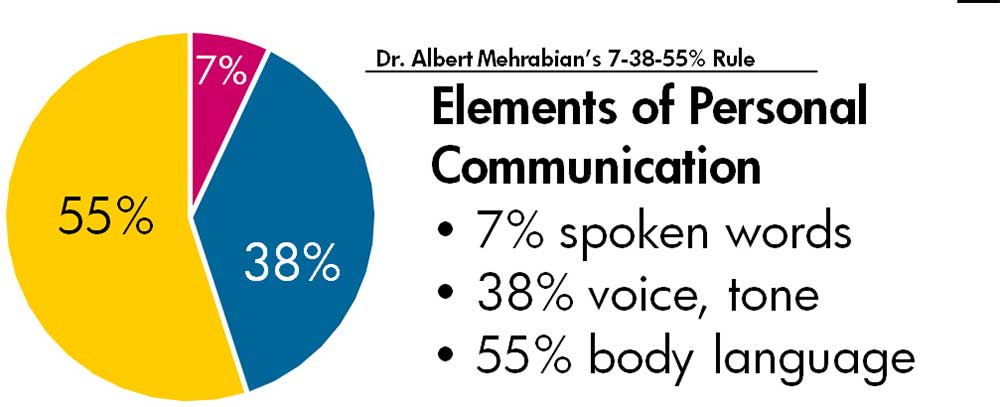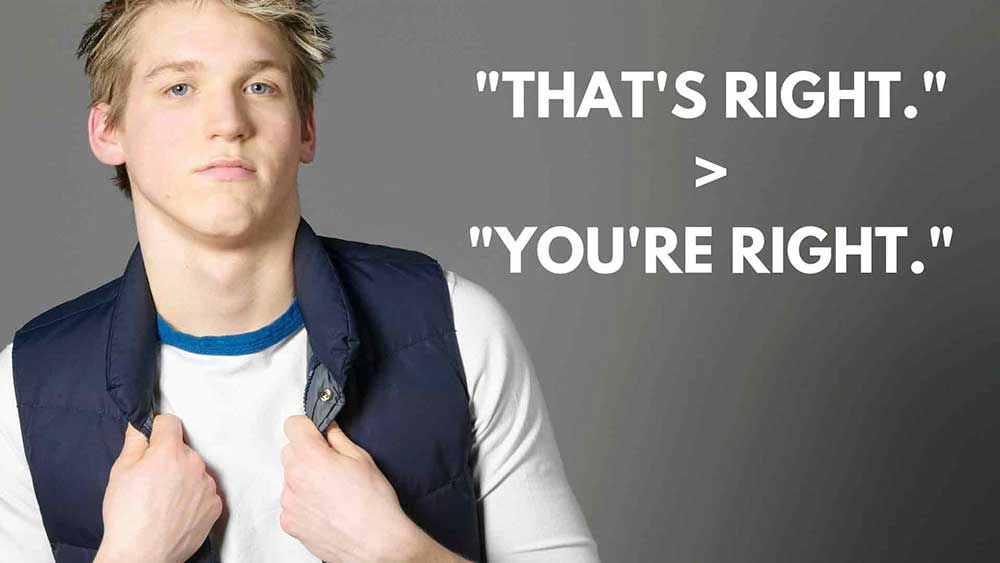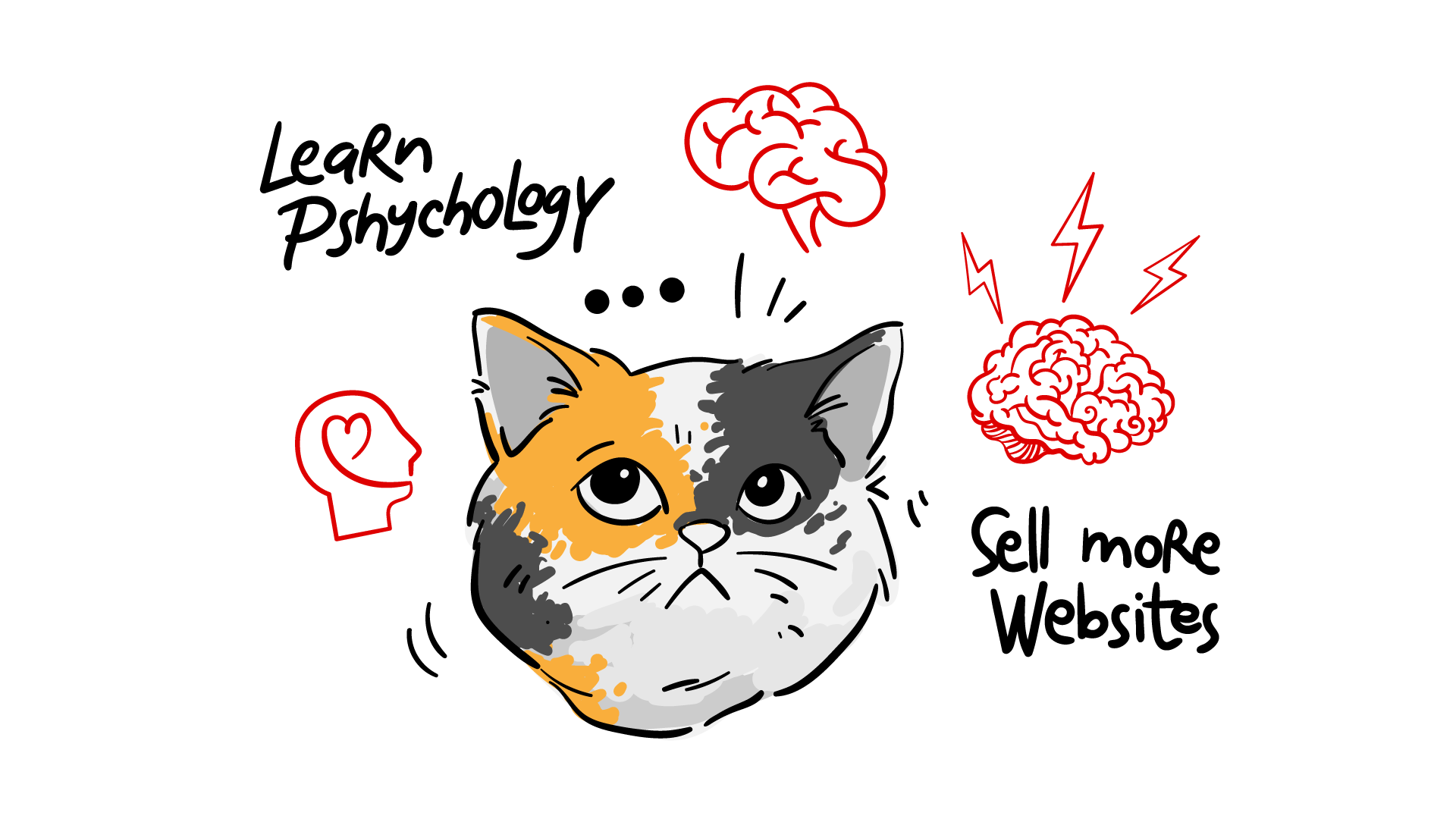I hate doing sales. Always have too.
It was my least favorite part about working on the family business with my dad and, if I’m being honest, it’s the least favorite aspect of running my own web design business today.
But sales is essential. So if you want to build a successful web design business, you need to learn to love it.
What helps me to learn to love things that I instinctively hate?
Get really good at it.
One of the best books I’ve ever read is Never Split the Difference by Chris Voss, one of the FBI’s all-time top negotiators.
It is absolutely jam-packed with interesting stories and real, actionable negotiation tactics that you can use both in your day-to-day life, and in your business.
Many of the strategies mentioned below have come from this book.
I’ve used these strategies myself to sharpen my sales skills over the years and gain more web design clients.
Are you ready to do the same?
*starts rubbing two sharp knives together like a cool dude*
- Use non-round numbers in your quotes
- The 7-38-55 Percent Rule
- Use calibrated questions
- Label their emotions
- Provoke a “no” ASAP, instead of a “yes”
- Use mirroring instead of positive reinforcement
- Stay far away from “fair”
- Trigger a “That’s right” not “You’re right”

1) Use non-round numbers in your quotes

If you live in North America, you know that you can’t buy anything for $10.
But you can buy an infinite amount of things for $9.99.
There are multiple psychological effects that are happening when companies choose to price their products this way. But, for us web designers who will be specifically quoting each job at a unique price, here’s why using non-round numbers is super effective:
It gives your quote more credibility and weight.
Think about it. If I quote you on a website rebuild at $1,000, it sounds like I just pulled that number out of my butt. Your first inclination will be to negotiate for a lower price.
But If I tell you the website redesign will cost $965, you will naturally assume I have put a lot of careful thought into calculating this specific number. You will be less inclined to feel like you’re not getting a good deal.
Because what can you possibly buy for an even $1,000? The number just sounds too perfect.
2) The 7-38-55 Percent Rule

“It’s not what you say, it’s how you say it.” – Everybody, ever
The 7-38-55 Percent Rule is the result of a UCLA study that breaks down like this:
- 7 percent of a message comes from the words we choose
- 38 percent comes from our tone of voice
- 55 percent comes from our face and body language
The words we choose only account for a mere 7% of the emotional reaction we receive from the person we are communicating with.
Granted, this study was done under very specific circumstances that don’t necessarily apply to every aspect of our lives, but you can bet your Macbook that it applies to selling websites.
Empathetic communication is one of the most important web design skills you can master. Tone of voice and body language are critical components of empathetic communication.
But what if you spend most of your time communicating via text-based communication, like email? Can you apply the 7-38-55 Percent Rule in written communication?
Absolutely.
This is where injecting your personality into your brand becomes ever so useful.
What do you think they invented emojis for? Hmm?
3) Use calibrated questions

Calibrated questions are questions that have no fixed answers. You can’t simply respond to them with a “yes” or “no”. They require the recipient to put in a great deal of thought to find a solution, all while providing the illusion that they are in control.
Confused? Allow me to explain.
Calibrated questions always start with what are known as the “reporter questions”: Who, What Where, When, Why and How. The most effective calibrated questions are ones that start with “What” and “How“.
To use calibrated questions effectively:
- Decide where you want the conversation to go. (for this purpose, we want it to end in a web design sale)
- Design questions that will take your recipient down that path.
- Avoid asking any question that can be answered with a simple “yes” or “no”.
It really is that simple.
Here are some examples of how you can use calibrated questions to negotiate with your web design leads:
- “Does this quote work for you?” vs “How does this price feel to you?”
- “Does this look like something you would like?” vs “How does this look to you?”
- “Don’t you think we should have a signed contract for the project?” vs “What will we do if we get off track?”
- “Why did you do it that way?” vs “What caused you to do it that way?”
- “Do you think that sounds reasonable?” vs “How am I supposed to do that?” (this one is best used vocally, not in writing)
All of these questions turn the table on your recipient. If they make a request or demand that is unreasonable to you, these questions will simply put the solution-making in their hands.
They may even come to realize how unfair their demands are themselves.
4) Label their emotions

“It is self-evident that people are neither full rational nor completely selfish, and that their tastes are anything but stable.” – Daniel Kahneman (Psychologist and Author)
Emotions are raw and powerful. They can easily overtake and overwhelm our sense of logic. In a negotiation, this can be a real problem.
Labeling these emotions can disarm them.
This trick may sound a bit weird at first but, stay with me, because it’s super simple.
A great negotiator doesn’t ignore or dance around sensitive emotions in their counterpart. They acknowledge and identify them.
Your web design lead is likely to have all sorts of fears and emotions running through their mind. Things like:
- “How do I know this guy has the necessary web design skills?”
- “What if I’m overpaying?”
- “Do I really need to redesign my website?”
- “What will I do if I need to make small edits and changes here or there?”
Your job will be to sense these emotions and label them. How?
By literally reciting these emotions to them out loud.
Look at every single one of those emotions mentioned above, then simply add “It seems like you’re thinking…” right before it.
- “It seems like you’re thinking… ‘How do I know this guy has the necessary web design skills?'”
- “It seems like you’re thinking… ‘What if I’m overpaying?'”
- “It seems like you’re thinking… ‘Do I really need to redesign my website?'”
- “It seems like you’re thinking… ‘What will I do if I need to make small edits and changes here or there?'”
This will end in one of two ways:
- You’ll correctly label their emotion and illicit an enthusiastic response. Your web design lead will sense your empathy and feel like you truly understand their concerns.
- You’ll incorrectly label their emotion and encourage your web design lead to explain exactly what they’re feeling.
Either way, you’ll get one step closer to understanding your lead’s needs and successfully closing the sale.
5) Provoke a “no” ASAP, instead of a “yes”

“Every ‘no’ gets me closer to a ‘yes'”. – Mark Cuban (Owner of the Dallas Mavericks)
Yes, I realize I just told you to avoid questions that can be answered with a “yes” or “no”. But sometimes it’s unavoidable. Particularly in the beginning of a negotiation. Let me explain…
Ultimately, we want our negotiation with our web design lead to end in a “yes”. “Yes, I will buy a website design from you.” This is the exact result we want in any sales negotiation.
However, there is a serious stigma attached to the word “no”. We look at the word “no” as an undeniable rejection.
But when someone tell us “no“, what they are really saying is:
- I am not yet ready to agree.
- You are making me uncomfortable.
- I don’t understand.
- I don’t think I can afford it.
- I want something else.
- I need more information.
- I want to talk it over with someone else.
By re-framing how we look at “no”, we can start to look at it for what it actually is. A stepping stone that leads to “yes”.
What this boils down to is, like many other aspects of negotiation, control. We’ve all experienced the feeling of losing control in a negotiation.
If you’re negotiating to get a better deal on that hot new car, and the salesmen gets you to say “yes” to an easy question right from the start, you’re immediately put on the defensive. You’re suspicious of every question that follows after that. You feel like he’s leading you by the nose down the path that he wants to take you down. One that ultimately ends in you paying more than you want to for that car.
But, by giving the car salesman a firm “no” right off the bat, you let him know that you’re in the drivers seat here. You’ll be deciding which direction this negotiation takes. One that leads to you paying your ideal price for that car.
See how easily that minor adjustment can completely shift the mindset of the individual you’re negotiating with?
Once you receive that initial “no”, you can counter it with some calibrated questions:
- “What about this quote doesn’t work for you?”
- “What would it take to make this deal work?”
Or, label their fears and concerns:
- “It seems like something about this quote is bothering you.”
- “It sounds like you’re afraid that you’re not going to get your money’s worth.”
6) Use mirroring instead of positive reinforcement

Who doesn’t love some good ol’ fashioned positive reinforcement?
As it turns out, many of us. At least, subconsciously anyway.
One study done by Psychologist Richard Wiseman used restaurant waiters to highlight the power of mirroring over positive reinforcement.
One group of waiters used positive reinforcement with their customers, saying things like “sure”, “great” and “no problem” as they listened to and acknowledged their orders.
The other group of waiters employed the mirroring tactic, which simply involves repeating the customers orders back to them.
The result? The average tip of the waiters who mirrored was 70% more than the waiters who used positive reinforcement.
Mirroring is based on this basic human quality: We fear what’s different and are drawn to what’s similar.
And you can expand this tactic far beyond merely mirroring someone’s words. You can mirror someone’s tempo, body language, speech patterns and tone of voice.
7) Stay far away from “fair”

Anything even remotely resembling the concept of “fair” or “unfair” should be avoided.
Focusing on fairness is completely emotional and invites comparison. Comparison breeds nothing but negativity and lack of perspective.
Robin Williams, in his prime, commanded as much as $8,000,000 for a role in a single film. For the animated movie Aladdin, in which he voiced the genie, he offered to do it for a measly $75,000. He did this because he didn’t believe the movie would be that popular, and he wanted to leave something nice behind for his kids.
Then the movie became a $500,000,000 smash hit. And Williams was furious. He demanded that Disney give him a fair share of the profits.
Why was he so angry? After all, he was the one who had agreed to do the film at such a steep discount.
He was upset at the perceived unfairness of it all. Why should he only receive pennies on something that he directly contributed to its success? Had the movie actually been a mere blip on the radar as he predicted, do you think he would have reacted in the same way?
In like manner, never get involved in a comparison game.
Web design is an absurdly confusing industry. There are no clear pricing structures. There is no physical, tangible product to give your customer when the work is done. It’s all 1’s and 0’s. And many web designers undercut one another in fierce competition.
Don’t play that game.
You’ll find the words “fair” and “unfair” will pop up very quickly.
8) Trigger a “That’s right”, not “You’re right”

“Contrary to popular opinion, listening is not a passive activity. Is the most active thing you can do.” – Chris Voss (Author)
What’s the difference between “that’s right” and “you’re right”?
You tell someone “you’re right” when you’re tired of being bothered by them and try to inflate their ego to get them to leave you alone.
You tell someone “that’s right” when they affirm your world-view or version of events by reciting them back to you.
This is why you need to get your web design lead to say “that’s right” instead of “you’re right”. And it’s also why it usually comes towards the end of a negotiation.
We’re at the final stretch here. It’s time to bring home the bacon.
Psychology will only take you so far
Sales is hard.
In fact, it may just be the most difficult part about running your own web design business. But, naturally, it’s also the most important part. No sales = no clients = zero cash.
You constantly need to be sharpening your sales skills. Learning psychological tricks is great and all, but it’s important to remember that people buy from people.
You might have noticed that most of these psychological tricks strategies stem from the same basic human desires.
The desires to be heard, to be understood, to trust, to make genuine human connections are things that we all share.
What we just discussed is not a substitution for those things. They’re not meant to replace qualities like empathy, kindness, trust, and selflessness. They should be used to enhance those qualities.
This is not manipulation, it’s amplification.
Try using some of these in your next web design negotiation, and let me know how it goes!





